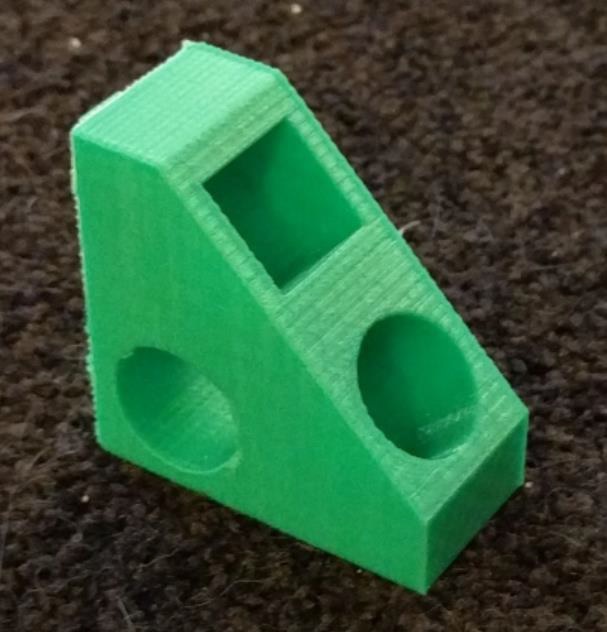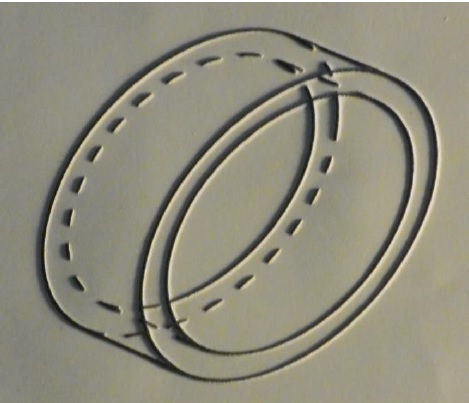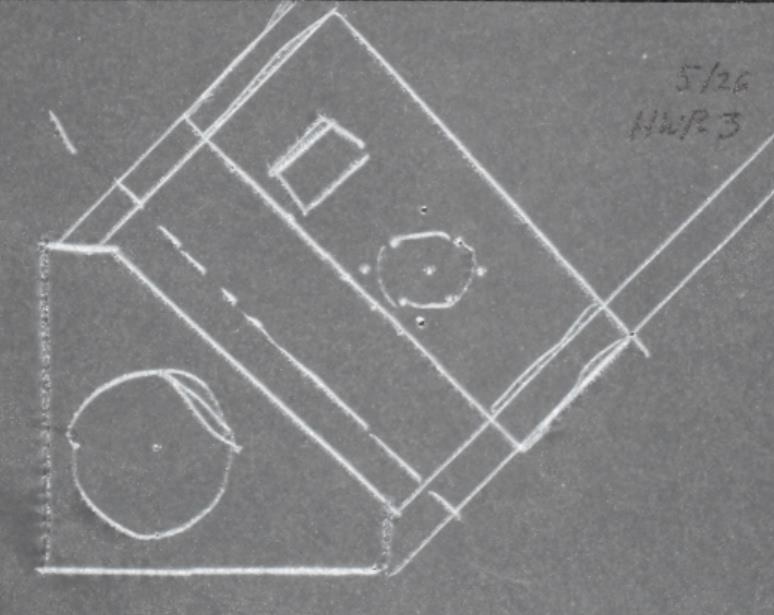Teaching a Blind Student Engineering Graphics – A Case Study
Credit: Francis Igot, ASEE
This eGFI Teachers’ blog post is based on a plenary presentation [YouTube video starting at 34:53] by Steven Zemke, a professor of engineering and physics at Whitworth University, at the American Society for Engineering Education’s 2019 Annual Conference in Tampa, Fla. His paper, “Case Study of a Blind Student Learning Engineering Graphics,” won the 2018 Best Overall PIC Paper Award. Download his paper HERE [PDF] or read online via this link.
It began with a conundrum: How to accommodate a blind mechanical engineering major, then a junior at Gonzaga University, who had to pass an engineering graphics course to graduate but couldn’t see what she was drawing using the computer-assisted design (CAD) system.
The visual communication of physical ideas is fundamental to most engineering endeavors. Drawings, 3-D computer models, perspective views, graphs, and figures are routinely used to convey design details and building requirements. However, engineering graphics and the “mental mapping” skills it builds are not synonymous with CAD, reasoned Steven Zemke, a professor of engineering and physics at Whitworth University in Spokane, Wash., who was approached by the Gonzaga student for help.
By replacing the “ubiquitous computer and paper visual interfaces” with assistive technologies – and some ingenious workarounds – Zemke was able to successfully teach the basic concepts of engineering graphical representation n a six-week, two-credit course. Student and instructor met individually 12 times for two-hour sessions. By the end of the course, the student was able to read and sketch both orthographic and isometric views of parts. There was also evidence that the student developed the mental spatial-visualization capabilities that provide a foundation for engineering thinking and hence met the overall program curricular requirements.
Zemke’s case study, which was presented at the American Society for Engineering Education’s 2018 Annual Conference and received a Best Paper Award, offers a window into the relationship between mental imagery and the visual expression of ideas. It also provides a blueprint for other STEM educators on creating accommodations for visually impaired students.
Adaptations included the use of 3-D printed parts for homework and practice problems, providing elements that could be physically examined and thus inform student and instructor discussions. The student also had a text-to-voice reader for e-mail. allowing her to receive detailed homework instruction and other content, and a braille sketch pad that creates an embossed line that can be seen and felt. (While lines couldn’t be erased, a second plastic sheet could be clamped over a prior sheet and retraced.)

To teach drawing, Zemke printed orthographic and isometric views of parts on paper with embossed lines. The process involved printing a CAD figure onto swell paper (Zychem Ltd.) with a standard laser printer. The paper then was fed through a desk top machine with heating lamps, causing the black marks on the paper to swell to approximately the same height and width as typical braille dots.(Image, right.)
In the first four sessions, the student learned to draw orthographic views of 3-D printed parts. (Images, left.) She encountered difficulties common to many beginning graphics students, such as omitting hidden lines. Still, she learned to use solid and dashed lines for visible and hidden features, show views in proper orientation relative to each other, and sketch views to the same scale.
Zemke says his findings might help sighted students, too. A basic goal of most graphics courses, for example, is for students to develop facility in spatial imagery.

Instructors are rightly concerned that students must develop a deeper understanding of engineering graphics than just manipulating lines on a page or creating pretty pictures on a computer. Perhaps if sighted students were given physical parts to examine while blindfolded and then subsequently asked to sketch them, Zemke surmises that their sketches would be based solely on their mental imagery – as his blind student demonstrated.
This sort of exercise would bypass the traditional reliance upon visual perception, especially computerized simulations, and develop students’ attention to detail in their mind’s eye.
Editor’s note: Spatial visualization is a key skill for engineers, architects, designers, mathematicians, and scientists, but it it rarely taught – even though abilities can vary widely by gender and race. ASEE’s Prism magazine featured an article and eGFI Teachers posted a blog about an effective curriculum for teaching spatial-visualization skills that was developed by the Integrated Teaching and Learning Program at the University of Colorado, Boulder’s College of Engineering and deployed for all incoming first-year engineering students. It uses play dough, graph paper, and plastic models like the ones Zemke introduced and is available for free online.
Filed under: Special Features, Web Resources
Tags: American Society for Engineering Education Annual Conference, assistive technologies, Blind mechanical engineering student, computer-assisted design, Engineering Design, engineering graphics, Research on Learning, spatial visualization, STEM education, Steven Zemke, Whitworth University









